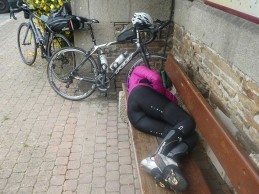What is a Power Nap, why is it so beneficial, and why has it been renamed?
The traditional siesta continues to show its beneficial effects, so much so that they have already found an anglicism to name it. Power Nap is the name given to the typical quick nap, especially in the world of ultradistance where it is essential during long-distance races for its revitalizing power.

The siesta is positioned as the best express recovery
The siesta continues to gain followers beyond our borders as evidenced by an article published by the British Journal of Sports Medicine which points out performance improvement based on various studies involving more than 300 athletes, inferring that the siesta improved their performance compared to athletes who only sleep at night.
The gains would not only be in physical performance but also cognitive, helping reaction capacity and concentration, which also reduces the perception of fatigue during training. In addition, it is also proposed as an additional aid in the recovery process. Furthermore, in elite athletes, where sleep disorders are common due to the effects of enormous efforts, the siesta would serve to alleviate the effects of lack of nighttime rest.
RECOMENDADO

Tips for getting up early to ride

Complete list of the highest paid cyclists of 2025

Shimmy Effect: why some bikes become uncontrollable when going downhill

How many calories are burned when cycling

What is heart rate variability and how does it affect the cyclist?

Fat Max Training to efficiently eliminate fat
The Power Nap, a term that Anglo-Saxons have used to refer to the siesta, indicates that, as is commonly recommended, the maximum benefits of the siesta are obtained when it lasts between 30 and 60 minutes, commonly known as "taking a nap" not only as recovery after morning training but before facing an afternoon training session, although it is recommended to wait at least an hour for the body to be fully active again after the siesta.
Among the recommendations related to the siesta, it is also advised to avoid exposure to bright light and noise during it, and to use relaxation techniques to help fall asleep. Additionally, we should not forget to set an alarm to prevent it from extending and affecting nighttime sleep, one of the basic tips for sleeping better at night. In any case, we should avoid taking a nap in bed to prevent it from extending for hours.
There are several recognized athletes who incorporate the Power Nap into their daily routines, such as long-distance triathlete Jan Frodeno or tennis player Carlos Alcaraz. It is interesting that Frodeno drinks a coffee just before taking a nap, so that it does not have time to take effect during the nap, and when it begins to take effect, the stimulating effect of caffeine is what helps him to reactivate.
In any case, it is undeniable that a practice so traditional in Spain continues to be exported and gain followers.